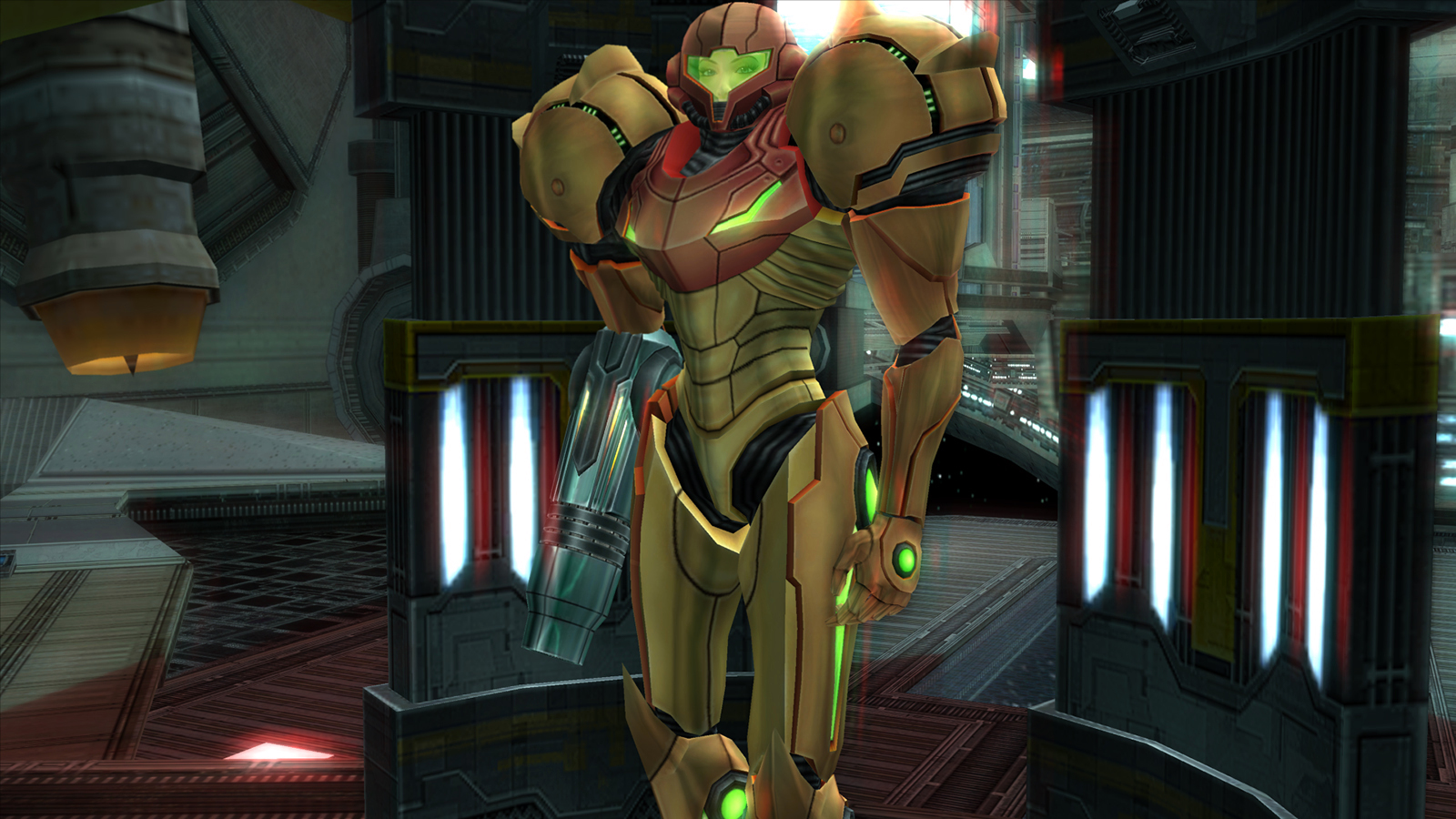Next to Super Metroid, Metroid Prime is easily one of the most recognizable and beloved adaptations of the underrated Nintendo series, and for good reason. Not only did Metroid Prime bring the series into the 3D world, it revolutionized its world-building and storytelling capability with the handy Scan Visor, and spawned two direct sequels. Nonetheless, these three games are too sequential and story-driven to really be successful open-world games.
Exploration
Metroid Prime is praised for its exploration and it’s easy to understand why. Samus is on Tallon IV on a revenge mission against Meta Ridley. She gathers the Chozo Artifacts to open the Impact Crater and exterminate the evil within entirely of her own free will. On paper, Metroid Prime’s promise of freedom shines, but in execution, the story — as strong and compelling as it is — sometimes uses linearity to progress.
The Story
When the game starts, you find yourself as Samus investigating a distress signal from a space pirate vessel above Tallon IV. Almost all personnel are dead or fatally injured with the only active life aboard being parasites. While Metroid Prime sets up the unsettling atmosphere excellently, the path from the beginning to the Parasite Queen and back to your ship is a straightforward loop. It’s just you going from door to door from one event to the next, never going off the rails. Visually, the game is stunning and it’s easy to immerse yourself in the world behind Samus’ visor, but there’s still an undeniable sequence to it.
Power for Progression
Upon landing, you have access to two paths: one where you can preview the Artifact Temple and another that leads to the Chozo Ruins. The latter has only one open door in the main plaza and leads to the Hive Totem where you fight a mini-boss for the missile launcher. If you look around the area you land, you notice a missile expansion behind your gunship, but you can’t get it because you don’t have the Morph Ball yet. It’s satisfying to see this goodie and it shows the game wants you to explore, but it also forces you to get the Morph Ball in the Ruins before the payoff.
Another door at the landing site leads to the space jump boots, but you can’t reach that area until you get the boost ball from the Phendrana Drifts, which you have to go through the Chozo Ruins and Magmoor Caverns to reach. It is almost like the game unintentionally taunts the player by placing power so close to the starting point. The player has to play through largely sequential events before getting them.
To the game’s credit, it does contain an element of exploration with the rune puzzles where you scan four runes spread across the room to open a door. This does show that they take exploration seriously and it’s expected of the player, but the Ruins are the only explorable region until you get the Varia Suit after defeating Flaahgra. Then it’s off to the Magmoor Caverns with no major suit upgrades until you reach the elevator to the Phendrana Drifts, although the Artifact of Nature is found so progress toward the Impact Crater begins. Then you can’t reach the Phazon Mines until you find the Gravity Suit in the Phendrana Drifts or access the Impact Crater until you have all 12 Chozo Artifacts.
Worldblocking in Echoes
Metroid Prime 2: Echoes is even more sequential. The game starts in the Temple Grounds and the only other area open to you is the Great Temple where the plot begins. Samus obtains the energy transfer module and U-Mos tasks her with stealing back the planet Aether’s planetary energy, which was stolen by the brutal Ing species after a devastating war. He then updates her scan visor to allow her to open gates that blocked paths to the Agon Wastes. The player has to go through Agon Wastes first because the more substantial suit upgrades are in the Torvus Bog and Sanctuary Fortress. The paths to both are blocked by gates that can’t be lowered until the planetary energy is restored and the scan visor is updated again. There are elevators to other areas but, of course, they can’t be accessed either because Samus lacks the power-ups or they’re outright blocked in the Dark World by Ingworms. Areas are blocked in the game shamelessly and it serves no purpose in the story whatsoever.
Sequential Planets in Corruption
Metroid Prime 3: Corruption may have been a step in the right direction toward a genuine open-world experience with multiple planets, but it’s mostly wasted potential. The game starts with Samus in her gunship flying to the G.F.S. Olympus where she and the other hunters are sent to Norion to defend the planet against a space pirate assault.
After that, Samus is tasked with destroying Leviathans that are spreading Phazon across the worlds of Bryyo, Skytown and the Pirate Homeworld. Once the mission on Norion is complete, Samus can fly to both Bryyo and Skytown, but she can only progress through Bryyo. To make it past the first room in Skytown, the hyper ball ability is required, which is only obtained once the Leviathan on Bryyo is destroyed. The G.F.S. Valhalla becomes explorable during the Skytown mission, although energy cells are needed to explore it completely. The Pirate Homeworld isn’t even accessible until the Skytown Leviathan is destroyed. Allowing the player to decide for themselves which planet to explore first would have helped improve the atmosphere of freedom.
Conclusion
The Metroid Prime games are well developed with compelling stories and thrilling gameplay, but to call them open-world games would be misleading. Metroid games, by nature, leave areas inaccessible to players until they get certain upgrades. The worlds only become completely explorable once they collect all major suit upgrades to keep the player from getting too powerful too quickly. Perhaps Metroid Prime 4 could be open-world if they let go of the power-up structure, made the worlds explorable without upgrades and let the player obtain power-ups by seeking them out on their own rather than having a single path and letting the plots play out through that sequence.
















